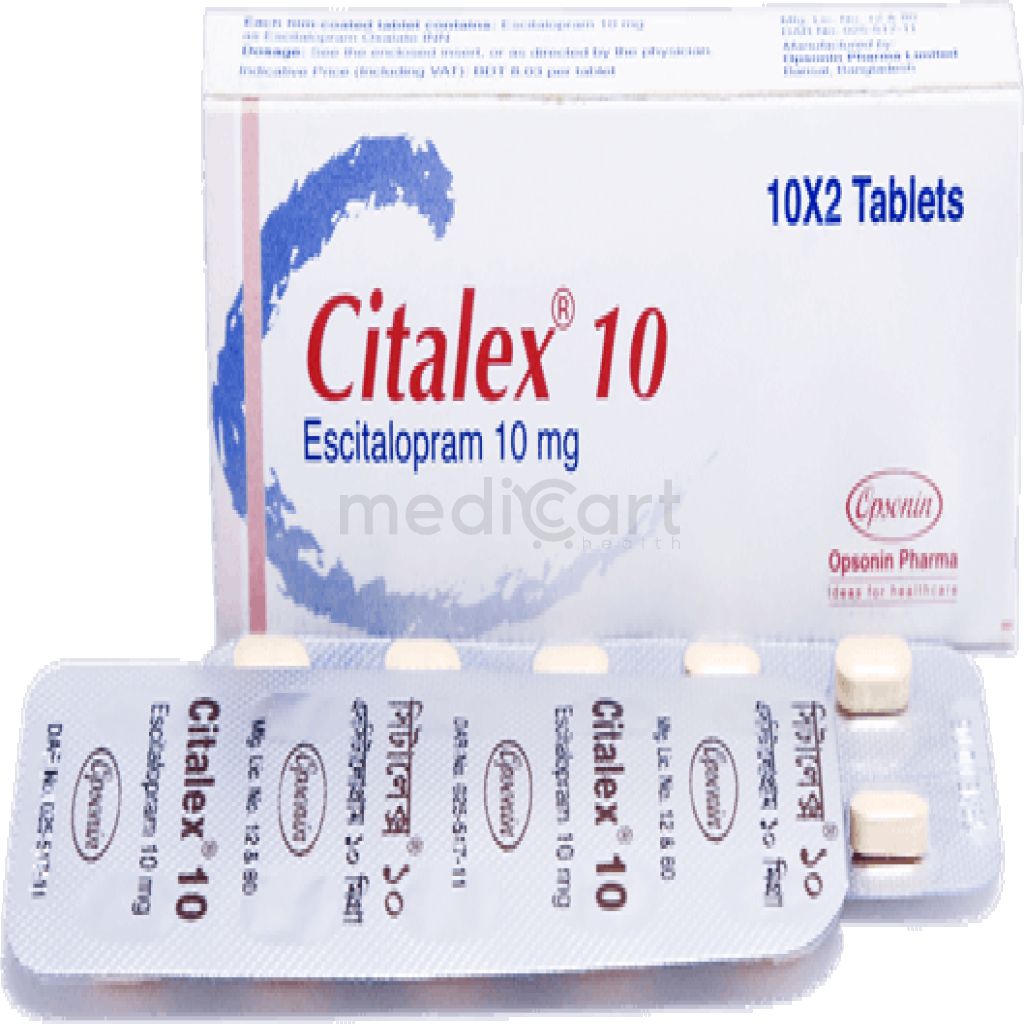

Agoxin - 0.25 MG
Tablet
Pack Size :
10 Tablet x 1 Strip
Generics :
Digoxin
Manufacturer :
Aristopharma Limited
Best Price *
TK
12.00
* Delivery will be done in Dhaka city only.
Alternative Product
More Information About - Agoxin - 0.25 MG
Description
Generic Name
DigoxinPrecaution
Cardiac dysrhythmias, hypokalaemia, hypertension, IHD, hypercalcaemia, hypomagnesaemia, electroconversion, chronic cor pulmonale, aortic valve disease, acute myocarditis, congestive cardiomyopathies, constrictive pericarditis, heart block, elderly, renal impairment, abnormalities in thyroid function; pregnancy. IV digoxin can only be given to patients who have not received cardiac glycosides in the preceding 2 wk. Lactation: Drug enters breast milk; use with caution (American Academy of Pediatrics committee states, "compatible with nursing")Indication
Heart failure, Supraventricular arrhythmias, Atrial fibrillation and Atrial flutterContra Indication
Digitalis toxicity, ventricular tachycardia/fibrillation, obstructive cardiomyopathy. Arrhythmias due to accessory pathways (e.g. Wolff-Parkinson-White syndrome).Dose
N/ASide Effect
1-10% Dizziness (4.9%),Mental disturbances (4.1%),Diarrhea (3.2%),Headache (3.2%),Nausea (3.2%),Vomiting (1.6%),Maculopapular rash (1.6%) <1% Anorexia,Cardiac dysrhythmia,Arrhythmia in children (consider a toxicity) Frequency Not Defined Visual disturbance (blurred or yellow vision),Heart block (1?/2?/3?),Asystole,Tachycardia Potentially Fatal: Cardiac arrhythmias in combination with heart block.Pregnancy Category
Name : Not Classified
Description
FDA has not yet classified the drug into a specified pregnancy category.Mode of Action
Digoxin is a cardiac glycoside which has positive inotropic activity characterized by an increase in the force of myocardial contraction. It also reduces the conductivity of the heart through the atrioventricular (AV) node. Digoxin also exerts direct action on vascular smooth muscle and indirect effects mediated primarily by the autonomic nervous system and an increase in vagal activity.Interaction
Effectiveness reduced by phenytoin, neomycin, sulphasalazine, kaolin, pectin, antacids and in patients receiving radiotherapy. Metoclopramide may alter the absorption of solid dosage forms of digoxin. Blood levels increased by calcium channel blockers, spironolactone, quinidine and calcium salts. Potentially Fatal: Electrolyte imbalances such as hypokalaemia and hypomagnesemia (e.g. admin of potassium-losing diuretics, corticosteroids) can increase the risk of cardiac toxicity.Pregnancy Category Note
Pregnancy Experience with digoxin in pregnant women over several decades, based on published retrospective clinical studies and case reports, has not led to the identification of a drug associated risk of major birth defects, miscarriage or adverse maternal and fetal outcomes Untreated underlying maternal conditions (eg, heart failure, atrial fibrillation) during pregnancy pose a risk to the mother and fetus Clinical considerations Pregnant women with heart failure are at increased risk for preterm birth; clinical classification of heart disease may worsen with pregnancy and lead to maternal or fetal death Pregnant women with atrial fibrillation are at an increased risk of delivering a low birth weight infant; atrial fibrillation may worsen with pregnancy and can lead to maternal or fetal death Fetal/neonatal adverse reactions Digoxin has been shown to cross the placenta and is found in amniotic fluid Monitor neonates for signs and symptoms of digoxin toxicity, including vomiting, and cardiac arrhythmias Dose adjustments during pregnancy and the postpartum period Digoxin requirements may increase during pregnancy and decrease in the postpartum period Monitor serum digoxin levels during pregnancy and the postpartum period Labor or delivery Risk of arrhythmias may increase during labor and delivery Monitor patients continuously during labor and delivery Lactation The digoxin dose received through breastfeeding is up to 4% of the neonatal maintenance dosage, which is unlikely to be clinically relevant There are no data on the effects of digoxin on the breastfed infant or the effects on milk productionAdult Dose
Atrial Fibrillation Rapid digitalizing (loading-dose) regimen PO: 10-15 mcg/kg total loading dose; administer 50% initially; then may cautiously give 1/4 the loading dose q6-8hr twice; peform careful assessment of clinical response and toxicity before each dose Maintenance PO: 3.4-5.1 mcg/kg/day or 0.125-0.5 mg/day PO; may increase dose every 2 weeks based on clinical response, serum drug levels, and toxicity Heart Failure As per ACCF/AHA guidelines, a loading dose to initiate digoxin therapy in patients with heart failure is not necessary 0.125-0.25 mg PO/IV qDay; higher doses including 0.375-0.5 mg/day rarely needed Use lower end of dosing (0.125 mg/day) in patients with low lean body massChild Dose
Heart Failure/Atrial Fibrillation Use doses at the lower end of the spectrm when treating heart failure Reduce dose by 20-25% when changing from oral formulation or IM to IV therapy Premature neonate PO: 1st loading dose, 10-15 mcg/kg; 2nd and 3rd loading doses, 5-7.5 mcg/kg q6-8hr for 2 doses; maintenance: 5-7.5 mcg/kg/day divided q12hr Full-term neonate PO: 1st loading dose, 12.5-17.5 mcg/kg; 2nd and 3rd loading doses, 6.25-8.75 mcg/kg q6-8hr for 2 doses; maintenance: 6-10 mcg/kg/day divided q12hr Infants & children 1-24 months PO: 1st loading dose, 17.5-30 mcg/kg; 2nd and 3rd loading doses, 8.75-15 mcg/kg q6-8hr for 2 doses; maintenance: 10-15 mcg/kg/day divided q12hr 2-5 years PO: 1st loading dose, 15-20 mcg/kg; 2nd and 3rd loading doses, 8.75-10 mcg/kg q6-8hr for 2 doses; maintenance: 7.5-10 mcg/kg/day divided q12hr 5-10 years PO: 1st loading dose, 10-17.5 mcg/kg; 2nd and 3rd loading doses, 5-8.75 mcg/kg q6-8hr for 2 doses; maintenance: 5-10 mcg/kg/day divided q12hr >10 years & <100 kg PO: 1st loading dose, 5-7.5 mcg/kg; 2nd and 3rd loading doses, 2.5-3.75 mcg/kg q6-8hr for 2 doses; maintenance: 2.5-5 mcg/kg/dayRenal Dose
Use lower end of dosing (0.125 mg/day) in patients with impaired renal functionAdministration
May be taken with or without food.Disclaimer
The information provided herein are for informational purposes only and not intended to be a substitute for professional medical advice, diagnosis, or treatment. Please note that this information should not be treated as a replacement for physical medical consultation or advice. Great effort has been placed to provide accurate and comprehensive data. However, Medicart along with its authors and editors make no representations or warranties and specifically disclaim all liability for any medical information provided on the site. The absence of any information and/or warning to any drug shall not be considered and assumed as an implied assurance of the Company.





